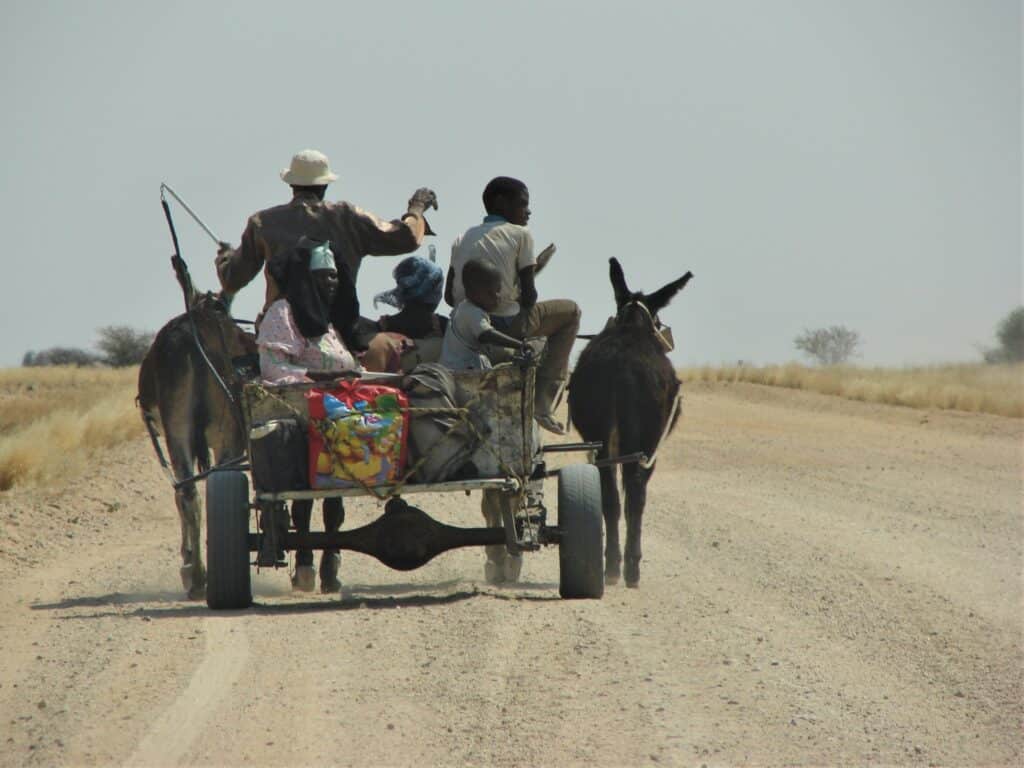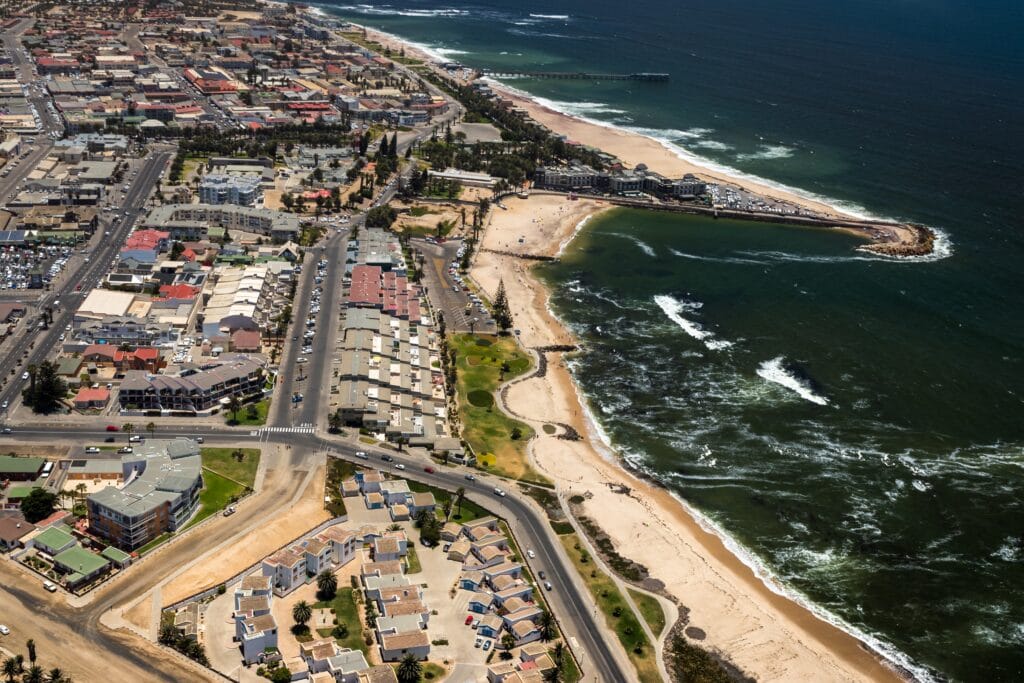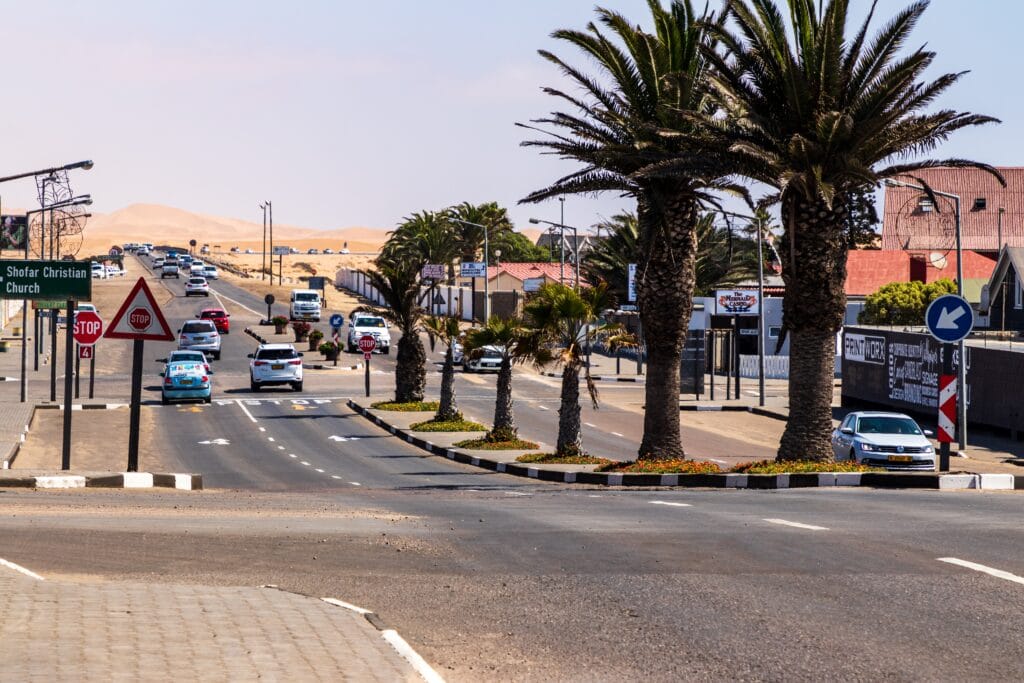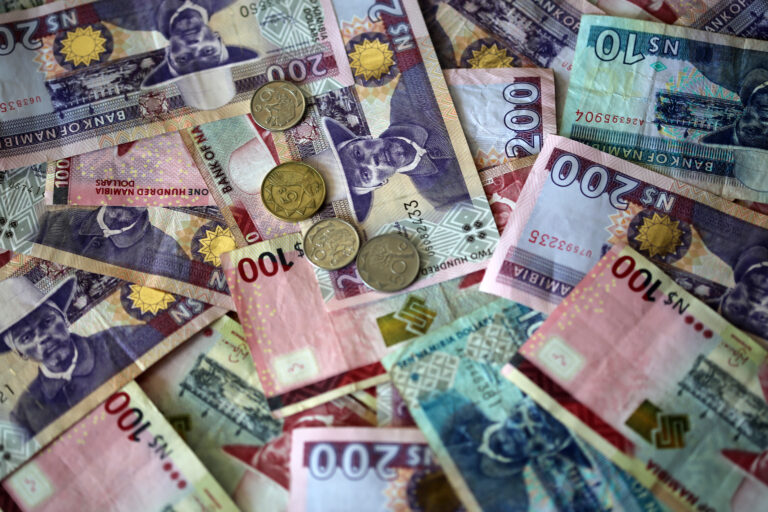The Namibian Dollar (NAD), introduced in 1993, operates alongside the South African Rand, maintaining a fixed exchange rate to support economic stability.
The Namibian Dollar (NAD) has been Namibia’s official currency since September 1993. One Namibian dollar equals 100 Namibian cents, just like dollars and cents in the United States. As the nation’s central bank, the Bank of Namibia (BAN) issues the national currency for circulation.
5 Facts about Namibia’s Currency
How well do you know Namibian currency? Check out these fast facts to test your knowledge.
1. Denominations
The Bank of Namibia issues Namibian currency banknotes in denominations of 10, 20, 50, 100, and 200. In addition, coins are available in 5-, 10-, and 50-cent values. BAN also issues coins that are each worth 1 NAD and 5 NAD.
2. Colorful bills
Each of the most current NAD bills has a distinct color with added hues. The bills are predominantly blue, orange, green, pink, and purple. But each note has a different color in the middle region and various colored accents on other areas of the bill.
The older NAD bills are also brightly colored. Both versions are legal tender.
3. What’s in a name?
Namibians knew they wanted an official currency in 1990. Still, they weren’t sure what to name it. They initially went with the Namibian kalahar, inspired by the region’s Kalahari Desert. Kalahar notes were even printed, but never used.
The name of the nation’s central bank was also up for debate. They considered Namibia Reserve Bank before settling on the Bank of Namibia.

4. What about the rand?
The South African rand (ZAR) is the national currency of South Africa, and it predates the Namibian dollar (NAD). The South African Reserve Bank (SARB) adopted the ZAR as its official currency in 1961.
While under South African rule, Namibia used the rand, too. The ZAR is still accepted as legal tender in Namibia.
5. Is the NAD linked to any other value or currency?
Yes. The Namibian dollar is pegged to the South African dollar at a 1:1 ratio. That means its value matches the value of the rand.

The Move from South African Rule and Adopting the NAD
Germany colonized Namibia in 1884. After WWI, South Africa began governing Namibia under a League of Nations mandate. The newly formed United Nations established a trusteeship system between South Africa and Namibia after WWII.
Twenty years later, in 1966, the UN General Assembly revoked South Africa’s trusteeship. Hostilities, uprisings, and battles between the regions followed. Ultimately, Namibia wrestled its independence from South Africa. Namibia’s Constituent Assembly adopted its new constitution in February 1990. March 21, 1990, is Namibia’s official Independence Day. The process of establishing a new national currency began soon after.
The Namibian Dollar (NAD) finally replaced the South African rand (ZAR) in 1993. However, the central bank didn’t issue the new coins until late December the following year. BAN also delayed introducing the 20 NAD and 200 NAD denominations until three years after it adopted the Namibian dollar as the national currency.
Security Features of the Current NAD bills
BON designed Namibia’s most recently issued NAD banknotes in 2012, ensuring a smooth transition of power in their design theme. They have seven security features to help prevent counterfeiting.
- When tilted, specific printed numbers and letters appear shiny and become visible on the other side of the bill.
- The BON acronym appears in the upper-right corner on the face of each banknote, but is only visible when lit.
- The color of a BON logo or diamond icon changes when you tilt the note. Also, a shiny bar appears to roll with the tilting motion on the 50-, 100-, and 200-dollar notes. On the 10- and 20-dollar NAD, the number appears as you tilt the bill.
- You’ll find Dr. Sam Nujoma’s image etched into the face of the 10 and 20 NAD bills, while an engraved picture of Captain Hendrik Witbooi appears on the 50, 100, and 200 NAD notes.
- Each bill has distinctive raised markings near the bottom-right side for people with visual impairments.
- Governor Ipumbu Shiimi’s signature is present on the front side near the middle at the bottom of every note.
- The bills include a watermark on the bottom-left side of the note that corresponds to their value and the image on the front. The watermarks are visible when held up against a light.

Namibian Exchange Rates
If you’re living outside of Namibia, you may be interested in learning how much buying power the NAD has in your country of residence. It’s also good to know the exchange rate when you send money to Namibia. Enjoy up-to-date exchange rate information on the Remitly website or mobile app. Learn how many Namibian dollars you can exchange for your U.S. dollars, euros, pounds, or Australian dollars.
Top currency pairings for Namibian dollar
When it comes to trading and investing with the Namibian Dollar (NAD), it’s essential to be aware of the most commonly exchanged currencies. The NAD is frequently paired with the South African Rand (ZAR) due to its historical link, as well as the US Dollar (USD), and the Indian Rupee (INR), which is often sought after for international transactions. For instance, one NAD equals approximately 0.05608 USD and is traded at a rate of 17.83 NAD for every USD. This relationship underscores the NAD’s relevance in the global market, especially for those involved in cross-border trade or travel.
In addition to the ZAR and USD, other notable currency pairings include the Euro (EUR) and British Pound (GBP). These pairings are crucial for individuals and businesses engaging in import and export activities, as well as for tourists visiting Namibia. Understanding these pairs not only helps in making informed financial decisions but also enhances the ability to navigate the complexities of foreign currency markets effectively.
How to convert Namibian dollars to US dollars
Converting Namibian dollars (NAD) to US dollars (USD) is a straightforward process, especially with the availability of various online currency converters. To initiate the conversion, simply input the amount of NAD you wish to convert into a currency converter tool. These tools provide real-time exchange rates, ensuring you receive the most accurate and up-to-date information for your transactions.
For those looking to conduct money transfers, it’s important to note that many of the best money transfer providers offer services that facilitate the conversion of NAD to USD. By selecting NAD as the source currency and USD as the target currency, users can seamlessly complete their transactions while remaining informed about the current exchange rates. This process not only simplifies international money transfers but also allows individuals to effectively manage their finances when dealing with multiple currencies.
Input your amount
To convert Namibian dollars (NAD) to US dollars (USD), simply enter the desired amount in the designated box of your currency converter. This user-friendly USD interface allows you to quickly and accurately see how much your NAD is worth in USD, ensuring you make well-informed decisions during your transactions.
Coins
The currency of Namibia employs a practical denomination system with coins available in various values. Featuring the iconic portrait of Kaptein Hendrik Witbooi, these coins range from 5 cents to 5 dollars, supporting everyday transactions. Each coin serves not only as legal tender but also as a representation of Namibia’s rich heritage. As users engage in money transfers or use a currency converter, these coins remain integral to the economic landscape. Their designs reflect the cultural identity of Namibia, enhancing the visual aesthetics of the NAD.

